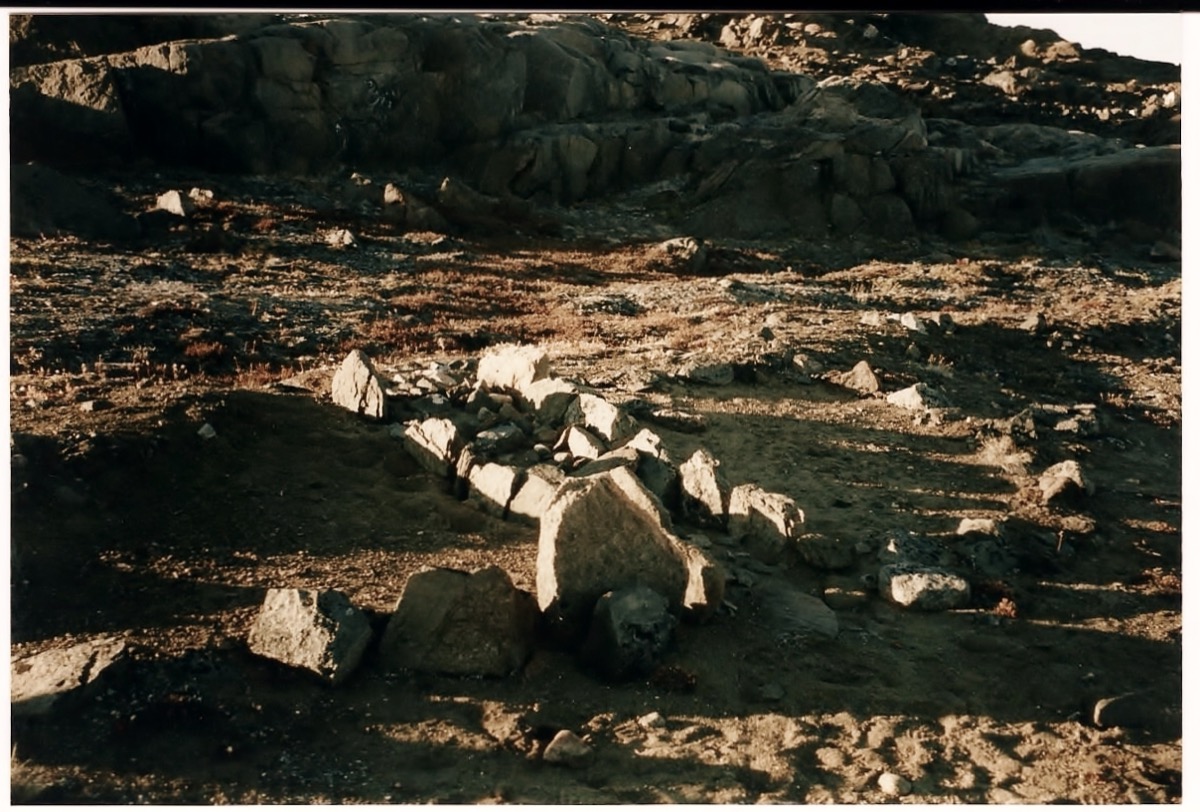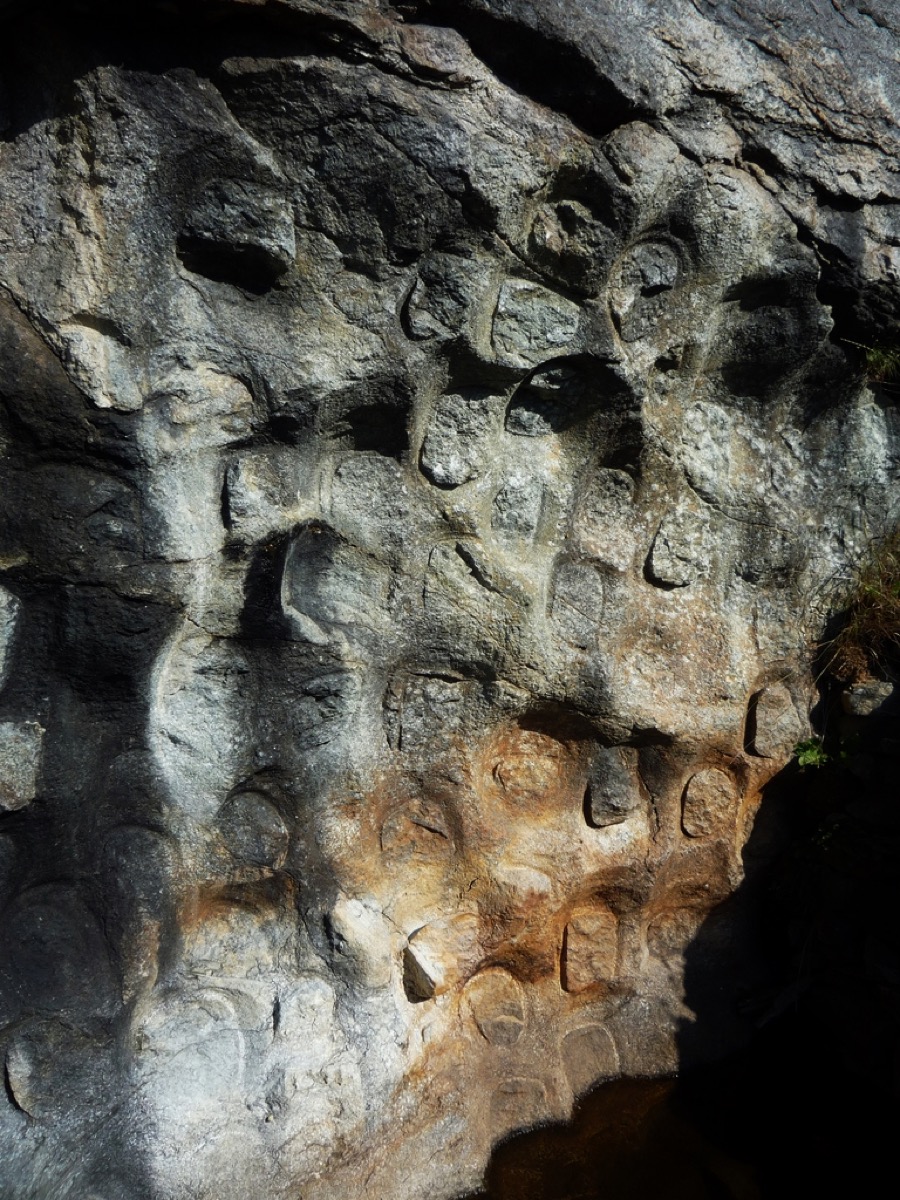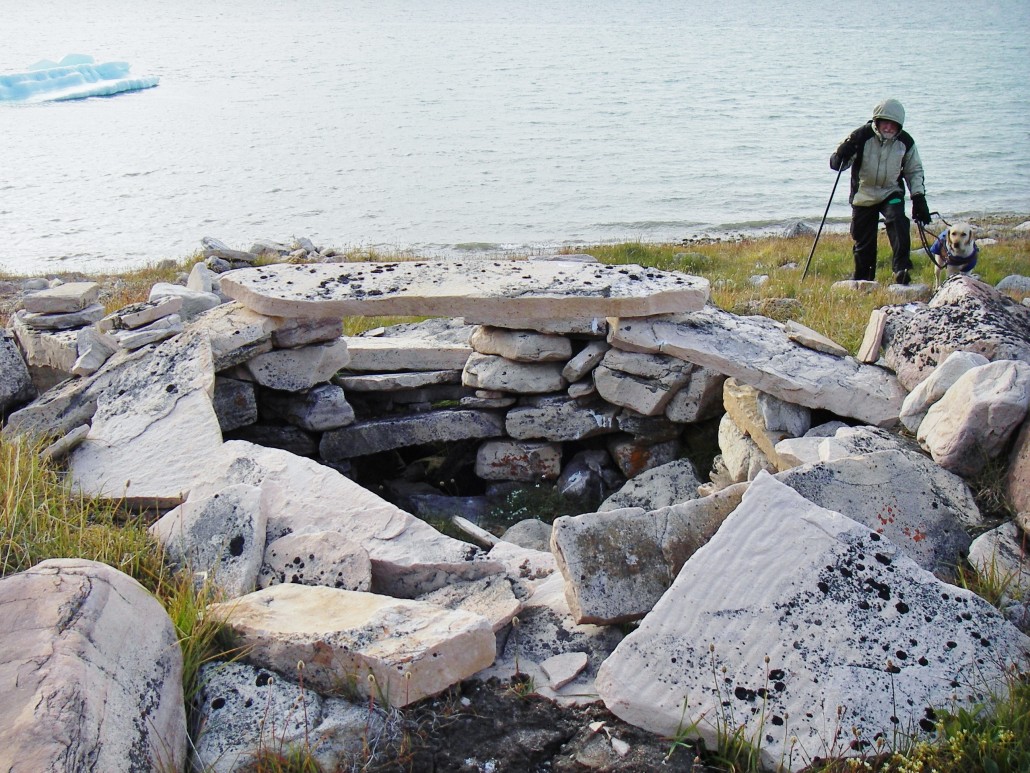Arctic Images, Art and the Inuit Culture
The indigenous people of the Arctic look very much alike, even though they inhabit the huge expanse of land from the Pacific Coast of Alaska to the shores of Greenland, but they also differ in many ways, both before recorded history and now. For example, they came to North America at widely differing time periods, separated by thousands of years; they live in a wide range of geographical locations and environmental conditions, some near the sea, others near the tundra plains, some at extreme northern latitudes, and still others in mountain ranges and throughout their time, they have used differing, but increasingly sophisticated types of technology to survive the harsh polar climate. These differences have resulted in their having many individual group names, the most well-known of these are Eskimo, Yuit, Upik, and Inuit. However, in 1977, polar people themselves adopted, “Inuit” as the term to describe themselves collectively, so that term will be used here.
History of the Inuit People and their Art
Pre-Dorset and Dorset Cultures. Evidence of the first inhabitants of Arctic North America was found near the Bering Straits and dates back to around 3000 BCE, but little is known of these very early Pre-Dorset people other than that they arrived there from Asia via the Bering Land Bridge, that they shaped artful hunting points , and that they lasted into the first Millennium CE. A second migration from Asia occurring around 2000 BCE brought their relatives, the Dorset, who developed superior technologies, including triangular hunting tips, soapstone lamps for heat and light, and cutting stones called burins. In addition, the Dorset were known for their elaborate art, which appeared to be primarily religious or magical in nature. Most pieces were 3-dimensional; small, only a few centimeters in length; and made of bone, but also contained distinct, primarily masculine images. Their clothing was unique to them, containing high collars, not the hoods we now associate with polar people. They were also identified by their lack of the use of bows and arrows, skin boats, dog sleds, and igloos. The name “Dorset” was derived from Cape Dorset, the location in which their artifacts were first found. It is theorized that a warming trend around 1000 CE melted the shore ice that served as their seal hunting grounds and deprived them of their primary food source, ultimately leading to their disappearance around 1500 CE.
The Dorset used tents, rather than the traditional excavated huts of the Thule people, so the ruins show the remains of the ring of stones that were used to hold the edges of the tents down. Dorset huts also commonly were composed of two rooms, separated by a stone platform. These ruins date back to around the time of Christ.
Paul had the good fortune of paddling Cane Basin on Ellesmere Island in 2000 and in the Inglesfield Fjord near Qaanaaq, Greenland in 2006, which enabled him to view the ruins of Dorset and other prehistoric dwellings first hand. Almost miraculously, the remains of several approximately 2000-year-old Dorset summer houses are still preserved at many sites around the Arctic. Also, he was able to visit a 1500-year-old Dorset soapstone lamp quarry that has been preserved as a National Historic Site at Fleur-de-Lys, Newfoundland.
The exposed soapstone rock faces found at the site were mined primarily for lamps and bowls. The preserved soapstone wall shows markings indicating that square or rectangular stone blocks were removed by first using burens to cut deep lines on all four sides. The blocks were removed from the wall by using a combination of chisels and wedges, relics that were also found at the site. The soapstone blocks were ultimately carved into lamps or bowls, and then put into use or traded.
Thule and Inuit Cultures. The Thule (pronounced Tooley) culture, from whom the modern Inuit developed, appeared around 1000 CE and their reign ended in approximately 1600 CE, when the Inuit became prominent. Thule huts varied from tent ring houses to subterranean pit huts that often included whale bones in the construction. The second, the one being approached by Paul and Ellie, was taken along Inglesfield Fjord near Qaanaaq, Greenland. The Thule were known for their advanced technologies, primarily carving elaborate spear tips for hunting whales, developing the kayak and umiak, inventing dog sleds, and producing polished flint, iron, and copper utensils and tools. Unlike the Dorset people before them, their art had a feminine, rather than masculine nature. Their carvings commonly appeared as etchings on women’s tools, such as combs, thimble cases, needle cases, etc. or they were 3-dimensional swimming figures, many of which depicted women from the waste up. Interestingly, Thule art seldom contained facial details, further differentiating it from the more precise Dorset carvings.
The Thule people spread east throughout Canada and into Greenland, while continually developing and improving their technology. The modern Inuit are direct descendants of the Thule culture, thus share their technology. Like the Dorset before them, changing weather was a major cause of their demise. In the Thules’ case though, not warming, but cooling temperatures in the 16th Century, created ice, forced whales further off shore, and made hunting difficult and extremely dangerous. Consequently, the Thule began to fail. Their replacement by the Inuit was also surely influenced by the technological advantages the Inuit gained from their frequent interactions with European whalers and explorers.
As an aside, Paul reports that although Europeans brought many technical advantages that helped Inuit people succeed, not everything they passed down was viewed as positive. For example, when asked, “Have you been better off since the Europeans came?” Their answers were commonly something like, “Their tools, games, music, and dances have brought us much happiness, but their diseases, sweets, tobacco, and alcohol have made us weaker and more troubled.”
During the 1800’s, European whalers and explorers were becoming common visitors to Arctic encampments and trade became part of the everyday commerce between the cultures. The carvings being traded by the 1920’s, which were primarily made of bone, were becoming more sophisticated, had begun to lose their original religious or magical focus, were highly superior to those made for their own uses, and they increasingly included items brought by outside traders, such as game pieces, cigarette and match holders, and even Roman Catholic figurines. Perhaps, the most important change in the marketing and distribution of Inuit art came in 1948-49 when James Houston, a young Toronto artist, arrived in the Arctic and began to encourage Inuit artists to use their skill to produce income. These efforts resulted in the first carvings to be shipped south and sold in metropolitan markets. These first pieces were from Puvungtuk and Inukjuak, but other Baffin Island hamlets, including the now famous, Cape Dorset, soon joined the movement. Houston was assisted in this endeavor through the funding or support of the Canadian government, the former Canadian Handicraft Guild, and the Hudson Bay Company.
In this photo, Paul is standing in the excavation of a typical Thule pit hut on Scraeling Island, near Ellesmere Island that dates back to around 1000 years ago. The bones in this hut represent the remains of the mammals that were consumed here by the people who built this hut. Therefore, these bones are also nearly a thousand years old, preserved so well by the consistently cold temperatures of the region.
Houston introduced Inuit Print Making in Cape Dorset in the late 1950’s and it has also gained widespread popularity among artists across the Arctic and collectors around the world. It remains second to carving in overall art activity among Inuit people, but it is reported to provide the best return to southern collectors. Paintings have been produced by Inuit artists as well, but have not gained much popularity among artists or collectors. However, wall hangings, either appliquéd or woven, are apparently highly valued by some collectors, but they have also not reached the popularity of carving or print making.
Paul has been collecting Inuit art since 1988 and, although his collection is modest, he has had the opportunity to see thousands of pieces during his Arctic travels and during three visits to the four major wholesale houses in Toronto. He also had the opportunity to spend two days at the Inuvik Northern Arts Fair, where he saw carvings and visited with carvers from all corners of the Canadian North.
Conclusions. A few conclusions seem appropriate after the past 25-years or so of observing:
The carvings are wonderfully varied, particularly over geographic location
The variation in the shape and form of carvings that is due to the carver’s location has always been known, but the availability of pieces from all corners of the North has been hugely increased by the modern day distribution systems. In addition, the images of Inuit art, even dating back to Dorset and Thule pieces, are readily available on Inuit Art websites across the Internet.
There are many more carvings available now than there were in 1988, particularly among those priced under $500
The general increase in less expensive carvings is, presumably due to the increase in the number of young or relatively new carvers, who because they are just getting started, are willing to sell their works for less.
There is a decrease in carvings from Serpentine and native Arctic soapstone and a corresponding increase in pieces carved from imported stone, including soapstone, alabaster and marble.
In 1988, it appeared that most carvers were using serpentine or other forms of native soapstone, however, now soapstone varieties from all over the world are commonly used and it is not difficult to find carvings in alabaster or even marble.
All these changes lead to speculation about their effect on the art form. There are those who surely feel that the quality of Inuit carving has suffered from the changes pointed out here, that is, increased numbers of lower priced pieces degrades its overall status and value. On the other hand, another conclusion would hold that the increased availability of Inuit art disperses it more widely and has the effect of increasing the world knowledge of Inuit culture, an obviously positive viewpoint. In addition, the use of nonnative carving stone, such as alabaster and marble, also has both positive and negative aspects. Less use of native serpentine and Arctic soapstone varieties may indicate that such materials are becoming more rare or even endangered. On the other hand, increases in the use of other stone, particularly marble, may indicate a step up in the carvers’ skill development. In fact, two veteran carvers Paul talked with in Yellowknife said that they traveled all the way to Colorado just to pick up marble sculpting skills. The other positive about the decreasing use of native Arctic stone is the fact that by the nature of their rarity for carvings, they increase in value. As a result, pieces carved from serpentine should continually increase in value as the number of such carvings decrease.
Reference: www.thecanadianencyclopedia.ca/en/article/inuit-art/
The Thule pit hut being approached by Paul and Ellie in this photo was taken along Inglesfield Fjord near Qaanaaq, Greenland. Note the entry point on the far side, which apparently permitted entrance only by squeezing through snake-like on the stomach. There were a group of several pit hut ruins in close proximity along with a burial cairn containing the skeletal remains of a Thule individual who died here during the Thule reign.
This large iceberg was one of hundreds encountered during a two-week 40-mile paddle in Inglesfield Fjord near Qaanaaq, Greenland. One of the wonders of paddling there was the nearly constant explosive sounds of new icebergs being calved from the glaciers or the splashing rapids-like sounds produced from the icebergs themselves as they twist, turn, and roll over. As the underwater ice melts, the icebergs become top heavy and turn over without warning. Since many were much larger than city office buildings, paddlers never dared approach them unless they were grounded during low tides.
In this photo, Paul is crossing the Arctic Circle on a 1988 hiking trip in Baffin Island’s Auyuittuk National Park. The Arctic Circle is commonly marked by an Inukshuk, a word derives from two Inuktitut roots, Inuk, man and shuk-like. They are iconic symbols, traditionally used like scarecrows to entrap caribou, to mark boundaries, or simply to portray the iron-willed spirit of the Inuit people.
This photo clearly shows the river-like nature of an ancient glacier in Inglesfield Fjord near qaanaaq, Greenland, where Paul traveled with Whitney and Smith Legendary Expeditions in 2006. Similar trips are now available through Arctic Kingdom Polar Expeditions. Few individuals attempt unsupported paddling adventures this far north due to the inherent dangers posed by the environment and the need for group transportation rates to reach such a remote destination.
This large Inukshuk was assembled by an anonymous builder along the McKenzie Highway between its two northernmost towns, Behchoko and Yellow Knife. The word Inukshuk is derived from two Inuktitut roots, Inuk-man, and shuk-like. This Arctic icon has become widely known and adopted by people across North America and even Europe. I have seen them from coast to coast in Canada, as far south as the Upper Peninsula of Michigan in the States, and even on hillsides in Norway. Perhaps its popularity is due to its used by the Canadians as the official icon for the 2012 Winter Olympics.
During his travels across the Arctic, Paul contacted as many carvers as he could find. Here in 1992, he visits with Judas Ullulaq, one of the best known and most beloved of northern carvers, to chat about his carving techniques. In Gjoa, he was using a very large angle grinder to make the flat drum head of the drum dancer he was carving. Later at the Great Northern Arts Festival in Inuvik, he switched to simple hand tools, using a wood rasp and a couple of rifflers (curved files) to carve a handsome owl. Sadly, we lost this talented man in the Winter of 1999.
There are many talented women Inuit artists. Elisapee Ishulutaq, shown here, taken at the Art Gallery of Ontario, is one of the most well-known. Paul had the good fortune to meet her during his first trip to Pangnirtung in 1988. She happened to be attending a meeting at the Pang Interpretive Center that day, but she and the others freely shared their knowledge of Pangnirtungs whaling history and its Inuit art community. They had another chance meeting in 2012 at the OGA, where she was taking part in the opening of a new permanent Inuit Art Exhibition there. As Paul stepped up to meet her, she flashed a warm smile and her granddaughter said, “Grandmother does not speak English, but she recognizes you from when you met her in Pangnirtung a long time ago.” Alisapee left the nomadic lifestyle in 1960, settling in Pangnirtung, where she became world renowned for her drawings, carvings, and print-making. She is still active at 90 years of age.
Reference: CBC











